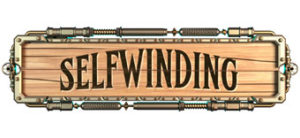Even though I’m an editor for hire, I firmly believe in self-editing. Each month I’m going to drop a tip for developing your ability to edit your own work or identify things to look for as you edit. Make sure to check out all the DIY Edit Tips to improve your self-editing.
12 Voice Intrusions
The fiction you consume influences what you write. Not just in terms of content, but in how you write and in the words you use to express your ideas. This is often a subconscious element of writing that appears during drafting, when another author’s syntax and diction might sneak into your draft. Don’t let that stop your forward progress—or turn you off reading!—accidental intrusions are normal for any author. The work of identifying those intrusions and correcting them comes in revision.
It’s important to be aware of what’s your voice and what’s someone else’s. Absorbing other authors’ craft is a great way to develop your own writing and allow it to evolve. But it’s important to absorb and internalize that craft so it becomes a natural part of your voice and not a glaring error. Revision is the time to smooth out those bumps, find those intrusions, and craft something that truly sounds like you.
- Does the dappled, wind-swept meadow fit in among your descriptions or does it stand out? Do you have lots of long, flowing descriptions of the settings and characters, or have you been reading Tolkein?
- Is that a ten-cent word one you’d normally use—and are there more of them—or is it there because you were reading David Foster Wallace?
- Are short sentences really your thing, or have you been reading too much Hemingway?
Pay attention when you or your readers identify something that sounds out of place within the rest of the manuscript. While you want to have sentences and descriptions that sing, it’s important to maintain consistency in your voice. Word choice and syntax are the foundations of an author’s voice, so pay attention to both while you craft your writing and make sure that your story sounds like it came from you.
Hiatus! DIY Edit will be going on hiatus for a few months. Expect it back in early 2019.
Like what you read? Help me continue making this content by leaving a tip through Ko-fi.
